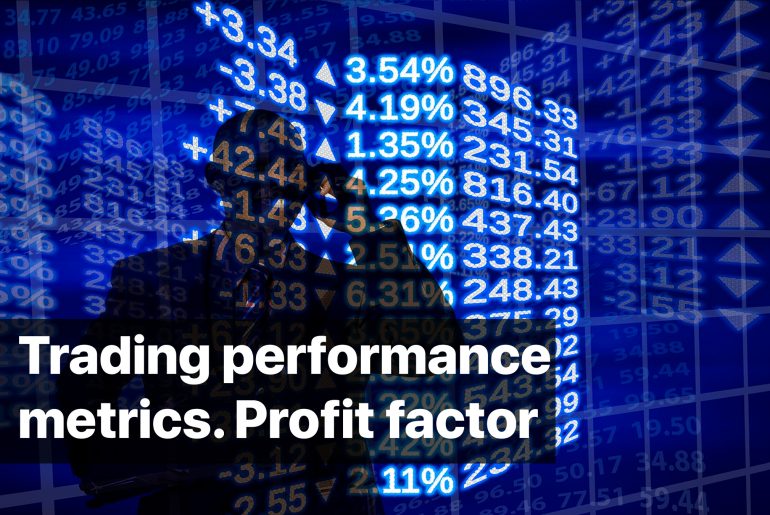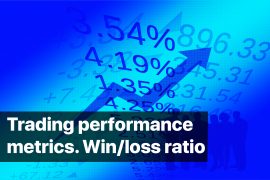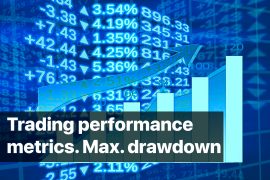It’s typical of any successful trader to evaluate final trading results for particular periods. It provides traders with plenty of opportunities for more profits, revealing the strengths of the trading system and also rooms for improvement. That is why the evaluation stage is considered to be one of the most essential parts of trading that contributes notably to profitability. Then the question arises: How to assess your results adequately?
Firstly, obviously, you need to have the data to assess. No data and analysis is the reason 95% of traders lose money and quit trading. It means that your trading performance should be tracked constantly to be assessed at this or that period. Thus, the first point is to gather trading statistics. By the way, in hedge funds that stably earn huge amounts of money, the statistics is one of the most powerful instruments that is always monitored and controlled by auditors. Just do the same!
Secondly, the “naked” statistics you gather is not enough to get a comprehensive picture of your trading performance. It is helpful indeed, but the trading report also should contain special trading performance metrics that provide you with a tremendous amount of data to test or evaluate your trading system.
To illustrate the obligatory need for supportive calculations, imagine yourself being aware of your final, let it be, monthly, profitability. In this case, you see (hopefully) the positive number, but you are not really able to evaluate your trading strategy because you do not know the price you paid for your earnings, although it might be too high. This way, you are not aware of the trading performance efficiency and not able to increase earnings accordingly.
That is why professional traders use trading performance metrics. Among the key ones, there is a profit factor, maximum drawdown, total, and average net profit, etc. In this article, we explain the profit factor, one of the basic but fundamental metrics.
Profit factor is calculated as the gross profit divided by the gross loss (in other words the total losses including the commissions) for a particular trading period.
Profit factor = gross profit / gross loss
This way, we get a number that reveals our profit amount per risk unit. The number is crucial for traders, as trading consists of wins and losses that you can’t avoid. The profit factor reveals the degree of how your profits are higher than losses, in other words, the efficiency of the trading system.
Profit factor > 1. Winning trading strategy
To illustrate, you have $200,000 of gross profit and $100,000 of gross loss, then:
Profit factor = $200,000 / $100,000 = 2
So, the profit factor = 2 means that your trading system gives you gross profit twice more than the gross loss that is a winning system.
Thus, the higher profit factor you have, the more effective your trading strategy is. Overall, the stable and effective trading system usually has a profit factor > 2.
Profit factor = 1. Zero game
At the same time, you could have $200,000 of gross profit per $200,000 of gross loss with:
Profit factor = $200,000 / $200,000 = 1
It means your trading has “zero” profitability. So, your efforts and time were in vain. It is a sign to correct your strategy.
Profit factor < 1. Losing trading strategy
On the flip side, with the $200,000 of gross profit and $400,000 of gross loss, you get:
Profit factor = $200,000 / $400,000 = 0,5
Here the gross loss is higher than the gross profit that results in a profit factor < 1. A true characteristic of a losing trading system and a strong sign to correct your strategy or take some rest!
As you can see, the profit factor is one of the fundamental benchmarks while assessing trading performance. However, keep in mind that using the only profit factor won’t give a comprehensive assessment of trading performance. This metric depends on a wide range of factors, for instance, the number of trades in your sample (the more trades you have the more reliable interpretation you get). That is why it is highly recommended to have a complex of trading metrics to monitor constantly (find the automated statistics opportunities in Bitinsure).
The next article will cover one more key trading metrics – maximum drawdown that will supplement your all-round trading system assessment and help you to achieve your trading goals!
Get more pieces of advice on how to succeed in trading and stay in-game even in case of 100 losses in a row from the following articles:
- Multiply the deposit via self-awareness (1)
- Multiply the deposit with the statistics analysis (2)
- Multiply the deposit with strategy optimization (3)
Stay tuned and join our social media:
Telegram: https://t.me/bitinsurecom
Facebook: https://www.facebook.com/bitinsure
Twitter: https://twitter.com/bitinsure_news



